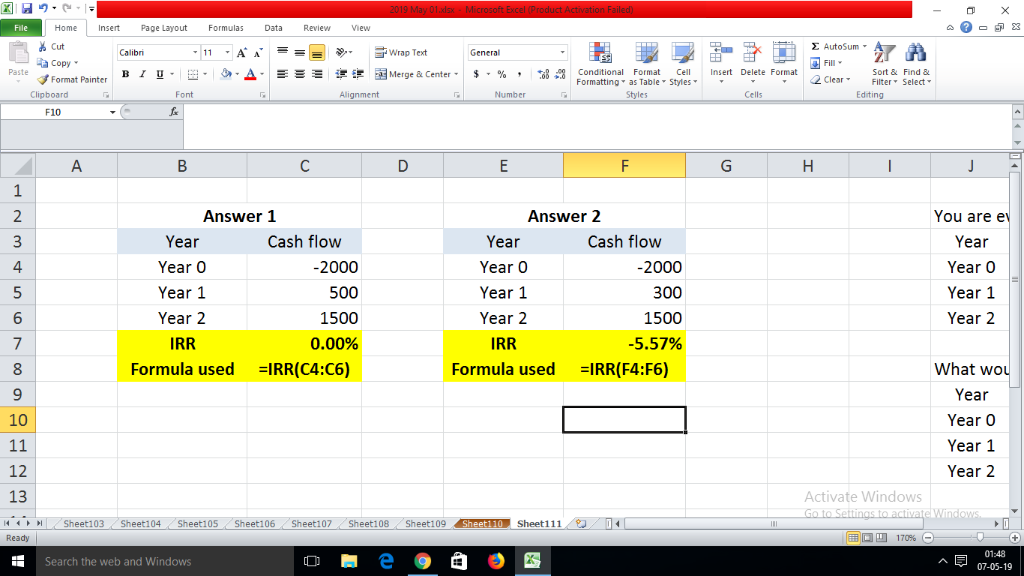Question
In: Accounting
you are evaluating an investment that requires $2,000 upfront and pays $500 at the end of...
you are evaluating an investment that requires $2,000 upfront and pays $500 at the end of each of the first 2 years and an additional lump sum of $1000 at the end of year 2. What would happen to the IRR if the annual payment at the end of the first year go down from $500 to $300 and the annual payment at the end of the second year stays at $500?
Solutions
Expert Solution
|
You are evaluating an investment that requires $2,000 upfront and pays $500 at the end of each of the first 2 years and an additional lump sum of $1000 at the end of year 2 (For Year 2 = 500 + 1000 = 1500) |
|
| Year | Cash flow |
| Year 0 | -2000 |
| Year 1 | 500 |
| Year 2 | 1500 |
|
What would happen to the IRR if the annual payment at the end of the first year go down from $500 to $300 and the annual payment at the end of the second year stays at $500? |
|
| Year | Cash flow |
| Year 0 | -2000 |
| Year 1 | 300 |
| Year 2 | 1500 |
| Answer 2 | |
| Year | Cash flow |
| Year 0 | -2000 |
| Year 1 | 300 |
| Year 2 | 1500 |
| IRR | -5.57% |

Related Solutions
An investor invests $500. The investment pays $100 at the end of year 2, $200 at...
-Suppose that you are evaluating the following investment opportunity. At the end of the the next...
You are evaluating a project that requires an investment of $99 today and garantees a single...
If you deposit $500 per month into an investment account that pays interest at a rate...
you have found an investment fund that will earn you $500 at the end of each...
An investment pays $20,000 at the end of year 2, $30,000 at the end of year...
An investment pays $20,000 at the end of year 2, $30,000 at the end of year...
Your firm is considering two investment projects, each of which requires an upfront expenditure of $48...
At the end of every year an investor pays £2,000 towards additional voluntary contributions to build...
Investment A is an annuity that pays $1,230 at the end of eachyear for 10...
- Bonita Cole Inc. acquired the following assets in January of 2015. Equipment, estimated service life, 5...
- Accoring to the equation: AssO3 + 3C = 3CO +2As the reaction of 1gmol of AssO3...
- Create a program in Visual studio c++ Frank wants to take his wife, son, and daughter...
- Please show Each Formula and Each Step used to obtain the answer(s). How many 18 Watt...
- 1. Draw the money market with the value of money on the vertical axis and the...
- Even organizations as large and successful as State Farm Insurance have to plan for the future....
- Q. WHAT IS THEORY X AND THEORY Y? Q. IF YOU HAD YOUR OWN COMPANY, WOULD...
 ekkarill92 answered 2 months ago
ekkarill92 answered 2 months ago